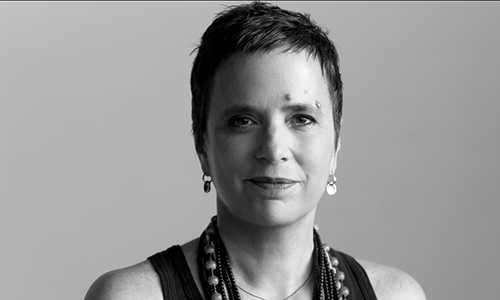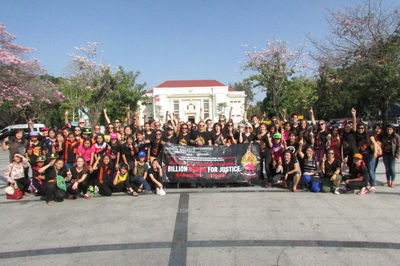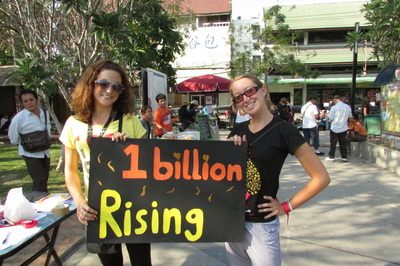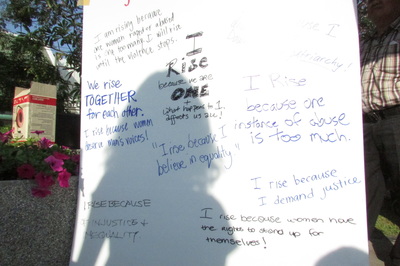|
During the First World War women around the world were an indispensable part of the war effort. Their roles at home, in civic life, industry, nursing, and even those in military uniforms, were extremely important to the outcome of the war. What is the situation like now? Are women valued in the part they play in modern warfare? Are they enjoying the same rights as men when serving in combat? Women Fighters in History
Throughout human history, soldiers and military personnel have been mostly male figures. Occasionally an exceptional woman comes up in military leadership roles, such as Queen Boudicca, who led a revolution against the Romans in Britain, or Joan of Arc, who led the French against the British. In some wars, for example the American Civil War, women disguised themselves as men in order to fight for their country. In recent history, we only see women in combat when they are needed, as there is a lack of men to fight. During the First World War, Russia used an all-female unit, the only country to allow women to fight in direct combat. In World War II, hundreds of thousands of women served in British and German armies. The Soviet Union had many women on the front lines serving as medical staff and political officers, and they had all-female sniper units and pilots. Women served in resistance movements in Communist Russia and Yugoslavia. After 1945, combat roles for women were halted and their services all but forgotten. After WWII, women served in the army in only 3 countries. The Democratic Republic of the Congo trained 150 women as para-commandos in 1967. During the Eritrean-Ethiopian War in 1999, a quarter of Eritrean soldiers were women. Israel became the first country to have mandatory conscription for women in 1948. Women in the Military Now In 1989, Canada ordered the full integration of women in the Canadian Armed Forces. Israel didn’t make this leap until 2000, and Australia still hasn’t, but plans to open up combat jobs to women in 2017. The first country to allow women to serve on submarines was Norway in 1985, and this year they included women in their compulsory military service. Sweden has similarly opened up to female roles, but so far only 5.5% of officers are women. New Zealand has no restrictions at all on roles for women, and so far women have made it into all sectors except the Special Air Service. Sri Lanka is open to female roles, but there are many limitations in ‘direct combat’ duties. Turkish women have voluntarily taken part in defending their country throughout Turkey’s history, including during WWI. Turkish independence was won with the heroism of Turkish women. Today, women are employed in the Turkish Armed Forces, because of ‘’needing qualified women officers in suitable branches and ranks’’. They serve all sectors except armour, infantry and submarines. In WWI and WWII women served in the United States army as Army Nurse Corps and Women’s Army Corps. They could enlist but could not have direct combat roles. In 1994 the military officially banned women from serving in combat, but in 2013 the ban was lifted. In the UK, women serve in the army but are still banned from frontline infantry roles, although this ban may be lifted soon. Some other European states also allow women to enter their armed forces. Objections Against Women in the Military
0 Comments
I remember being at university and watching a production of 'The Vagina Monologues'. I didn’t get it, felt extremely uncomfortable watching it, and didn’t really find it funny. Now when I think about it I know at age 19 I simply wasn’t ready to think about all the issues it brings up. Strange how almost 10 years later I would absolutely love to go and see it again, I know I would now understand perfectly and laugh and cry in all the right places. The Vagina Monologues was created by the wonderful Eve Ensler, a woman from New York who was abused by her father at a very young age. She wrote the novel ‘Insecure at Last: Losing It In Our Security Obsessed World’- on my reading list! – in which she describes the abuse. The book is about how people live today and the effort they make to keep themselves safe. Ensler wrote the play ‘The Good Body’ that explores how women from different cultures and backgrounds feel about their bodies in different situations. ‘I Am An Emotional Creature: the Secret Life of Girls of Around the World’ includes some very powerful stories and poems; monologues from real girls and women. The story describing how one woman escaped with her child from her rapist soldier captor in the Democratic Republic of Congo will always stay with me. Performances of 'The Vagina Monologues' play around the world inspired Eve Ensler to create V-Day, an organisation that promotes action against violence against women and girls. ‘One Billion Rising’ is the global protest event put on every year to give awareness about the one billion women and girls in the world that have been raped or beaten in their lifetime. The ‘V’ stands for Victory, Vagina, and Valentine- V-Day is the 14th February every year. One billion people dance on this day to promote justice and equality for women. www.onebillionrising.org/ Eve Ensler is one of the most inspirational women’s rights activists in the world today. Her stories about helping potential victims of Female Genital Mutilation in Kenya, victims of rape during war in the Congo, repressed women in Afghanistan, and lots else besides, are truly motivating to me. A woman who has suffered herself, and has risen up to give her energy to help so many others. Pictures from One Billion Rising, Chiang Mai, Thailand 14th February 2015 Eve Ensler shares her wisdom... Cocoa Production
Cocoa is grown in tropical regions around the Equator. The main cocoa producing countries are: Ivory Coast, Ghana, Nigeria and Cameroon, Indonesia, Brazil and Ecuador. Most is grown on small family farms: only 5% is from large plantations. Growing cocoa is the livelihood for 40 to 50 million farmers worldwide. Their work is intensive, as the trees need constant care and attention, and they produce beans all year round. It takes a whole year’s crop to produce only half a kilo. Cocoa beans are grown in pods. When they are ripe the farmers hack them off with machetes. The pods are then manually split open and up to 50 beans are removed from each. The beans are fermented by heating in trays covered with banana leaves, or just left in the sun. This takes 5 to 8 days. Then they must be dried, which takes about a week. Once dried, the beans can be shipped off to the manufacturers. To the Global North The farmers sell the sacks of beans to intermediaries, who export them to the Global North. First they reach the grinding companies, who remove the shells, roast the beans, and ground them into cocoa liquor. This liquor is used to produce chocolate, cocoa powder or cocoa butter. Chocolate manufacturing is a huge business, and confectionary companies make high profits. Companies cut costs to compete with other companies by paying the cocoa farmers less. Most farmers now live on around 1.25 US dollars a day: about 6% of what the consumer pays for chocolate. |




 RSS Feed
RSS Feed